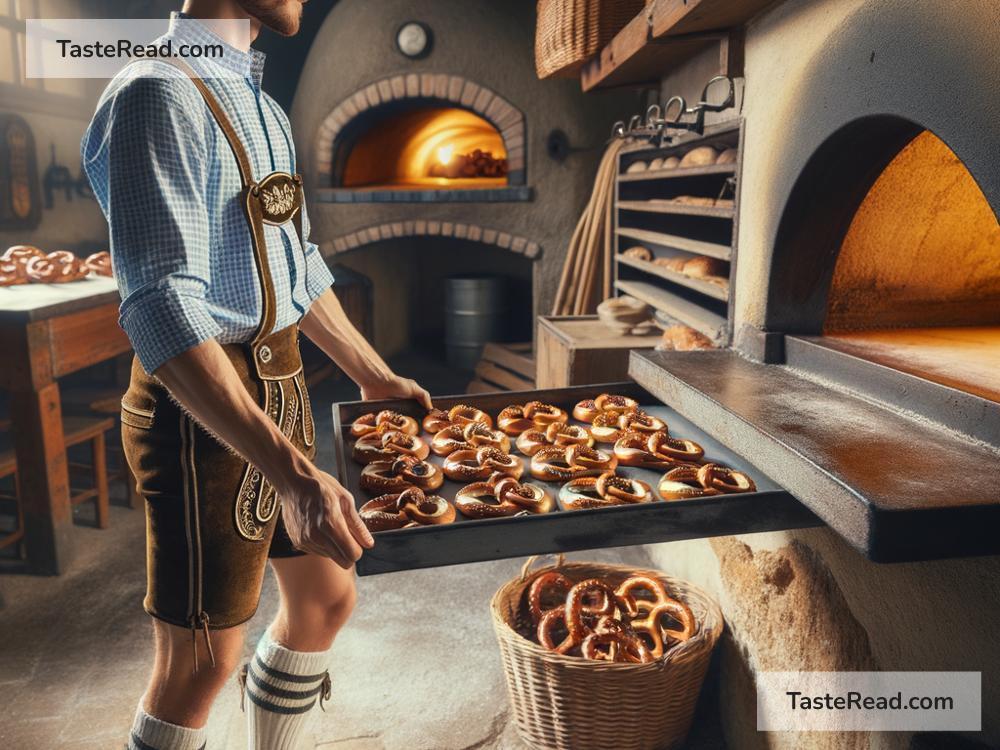The Tasty Twist: Exploring the Story of the German Pretzel
When you think of classic German food, what’s the first thing that comes to mind? For many, the answer is clear – the pretzel. This iconic treat, with its distinctive twist and shiny, salt-speckled crust, has come to represent not just German cuisine, but also a fascinating piece of history and culture. But how did the pretzel find its way into our hearts (and bellies)? Let’s unravel the delightful and surprising story of the German pretzel.
The origins of the pretzel are somewhat mysterious and entangled in legend. One popular tale suggests that the pretzel was born in the early Middle Ages, around 610 AD, in a monastery somewhere in Europe. According to the story, an Italian monk invented the pretzel as a reward for children who learned their prayers. He rolled dough to form the shape of crossed arms (a common pose for prayer at the time) and called this new creation ‘pretiola,’ Latin for ‘little reward.’ Interestingly, the pretzel’s twist could also resemble a heart, symbolizing love and care. As with many stories from so long ago, it’s hard to say for sure how true this is, but it’s a charming origin story.
From its humble beginnings, the pretzel journeyed through France and Italy but found a particularly welcoming home in Germany. It was here that the pretzel became more than just a snack; it grew into a cultural symbol. By the 12th century, the pretzel’s shape was seen in heraldry, illustrating its importance in German society. In some regions, it was even associated with good luck and prosperity, becoming a vital part of German traditions, such as weddings and New Year celebrations.
One of the most fascinating aspects of the pretzel’s history in Germany is its connection to Lent. During the 40-day period leading up to Easter, Christians were often prohibited from eating certain foods, such as dairy products. The traditional ingredients of the pretzel – water, flour, and salt – were not on this list, making pretzels an ideal Lenten food. It’s said that this connection is why pretzels became popular during Easter, with some historians suggesting that the pretzel’s loops represent the arms of someone in prayer, tying back to its supposed monastic origins.
As the pretzel made its way through Germany, different regions adopted their unique twists on the classic recipe. The result is the variety we see today, from the thick, soft pretzels of Bavaria to the crispy, crunchy versions found in Swabia. No matter the style, the essential process of making a pretzel involves a unique step: boiling the dough in a solution of water and baking soda before baking. This is what gives the pretzel its golden-brown color, distinctive flavor, and shiny crust.
Over the centuries, the pretzel has become deeply embedded in German culture. It’s more than just food; it’s a symbol of good luck, love, and heritage. Every year on April 26th, Germany celebrates National Pretzel Day, honoring this beloved snack. Whether you’re enjoying a pretzel at a traditional beer garden or during Oktoberfest (where they’re often paired with beer and mustard), you’re taking part in a tradition that stretches back for centuries.
Today, the allure of the pretzel has crossed oceans, with pretzel shops and stands popping up all over the world. From soft, doughy loops to crunchy snack bites, the versatility and deliciousness of the pretzel have made it a global favorite. But despite its worldwide fame, the heart of the pretzel remains in Germany, where it continues to be a cherished part of the country’s culinary landscape.
So, the next time you bite into a warm, salty pretzel, take a moment to appreciate the long, twisting journey it has taken through history. From a simple monk’s reward to an emblem of German culture, the pretzel is a testament to the enduring power of food to bring people together and create lasting traditions. And that, my friends, is a story worth celebrating, one delicious twist at a time.


